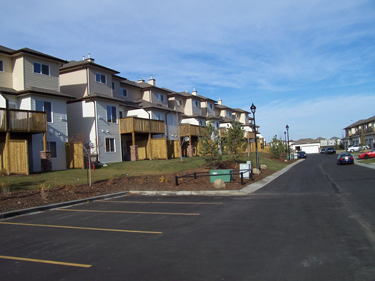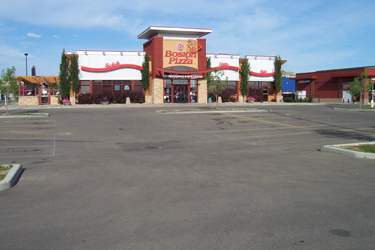You can check the status of your lot grading online at Lot Grading Self-Serve.
Any lot grading inspection reports or notices issued through the normal inspections and enforcement process would have been, or will be mailed or emailed to the property owner/applicant who applied for lot grading approval.
Parking lots are designed to store surface water during rainstorms. The water will eventually drain into the stormwater sewer system.
Under Section 9(1) of the Drainage Bylaw, all properties other than duplexes shall provide private drainage systems for stormwater runoff from roofs, parking areas, storage areas, paved areas, and courtyards.
If you are the registered property owner or an agent working on behalf of the owner, we can provide that information from the City of Edmonton search of records. For other individuals seeking lot grading information, you must request this under the provisions of the Access to Information and Protection of Privacy acts. Application processing takes approximately 10 working days for Search of Records and up to 30 working days for Access to Information Act (ATIA) requests. Applicable Fee is required per Titled Lot Search.
You can check the status of lot grading online at Lot Grading Self-Serve.
As the purchaser or acting agent of the purchaser (such as a lawyer or realtor) you must submit an Access to Information Request, to obtain this information. Application processing takes approximately 30 business days.
You can check the status of lot grading online at Lot Grading Self-Serve.
When selling a property, it is the owner’s responsibility to ensure that lot grading meets approval and is in compliance with the Drainage Bylaw. As the property owner or an agent, such as a lawyer, builder or developer working on behalf of the owner, you can obtain lot grading documents through a City of Edmonton search of records request.
Maintaining the site grading is the responsibility of the condominium association. If the project was built after 1993, there should be an approved Lot Grading Plan (Surface Drainage Plan) for the project.
Issues in projects built before 1993 can be solved by providing a positive slope away from the buildings. Contact your condo board or management company to address concerns on your property.
You can check the status of lot grading online at Lot Grading Self-Serve.
If you are the registered property owner or an agent working on behalf of the owner, lot grading documents can be provided through a City of Edmonton search of records request.
For other individuals seeking lot grading information, you must submit an Access to Information (ATI) request. Application processing takes approximately 10 working days for a search of records and up to 30 working days for ATI requests.
Documents can be obtained through a City of Edmonton search of records request (acting on behalf of the owner) or a Freedom of Information and Protection of Privacy Act (FOIP) request (acting on behalf of the purchaser).
Application processing takes approximately 10 working days for a search of records and up to 30 working days for FOIP requests. The applicable fee is required per titled lot search.
Maintaining the site grading is the responsibility of the condominium association. If the project was built after 1993, there should be an approved lot grading plan (surface drainage plan) for the project.
Issues in projects built before 1993 can be solved by providing a positive slope away from the buildings. Contact your condo board or management company to address concerns on your property.







